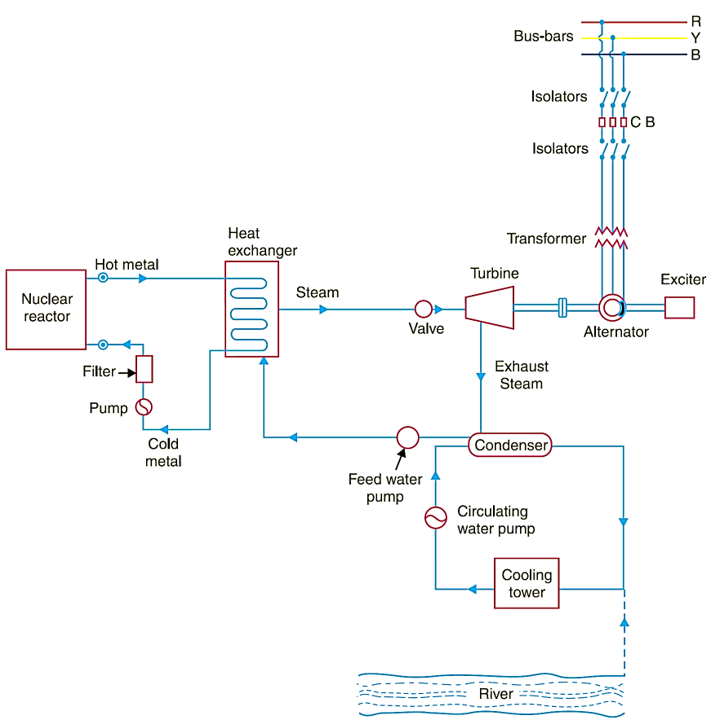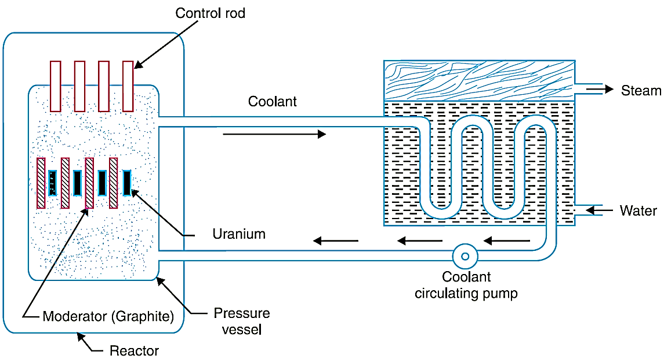In this topic, you study Nuclear Power Plant – Working, Diagram, Construction, Advantages & Disadvantages.
The power plant which converts nuclear energy into electrical energy is called nuclear power plant. Uranium (U235 ) or Thorium (Th233 ) are the main nuclear fuel. The heat energy obtained by the fusion of 1 kg of U235 is equal to that produced by burning of 2500 tons of coal.
Schematic Diagram of Nuclear Power Plant
The schematic diagram of Nuclear Power Plant is shown in Fig. 1 and whole arrangement can be divided into the following stages:
- Nuclear reactor
- Heat exchanger
- Steam turbine
- Alternator

Fig. 1: Schematic diagram of Nuclear Power Plant
Nuclear Reactor: In nuclear reactor nuclear fission of U235 takes place. The splitting of a heavy nucleus into two or more smaller nuclei is termed as nuclear fission. It controls the chain reaction that starts once nuclear fission is done. As shown in Figure 2, the main parts of Nuclear Reactor as Core, Moderator, Shielding, Coolant, and Uranium. The purpose of moderator is to slow down the neutrons in a nuclear power reactor. And the purpose of controlling rods in nuclear power reactor is to control the rate of fission of U235.

Fig. 2: Nuclear Reactor
Heat Exchanger: In the heat exchanger the heat of the working substance is utilized to heat in the water and convert into steam.
Steam Turbine: The steam produced by the heat exchanger is led to the steam turbine through a steam value. Here the heat energy is converted into mechanical energy.
Alternator: The steam turbine is coupled to an alternator which in turn produces electrical energy.
Advantages of Nuclear Power Plant
- Amount of fuel required is very small.
- Low running cost.
- Very economical in large capacity.
- Generation cost is small
Disadvantages of Nuclear Power Plant
- High capital cost
- Fuel is very costly
- Greater technical knowledge is required
Site Selection of Nuclear Power Plant
- Availability of adequate supply of water.
- Adequate transportation facilities.
- The land should be cheap.